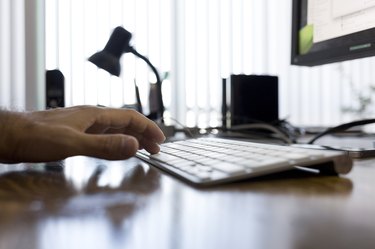
If you've encountered an I/O device error on your Windows computer, you're probably aware of just how confusing and frustrating this particular problem can be. An I/O device error is commonly defined as a problem that occurs when a computer's operating system can't complete the appropriate Input/Output tasks on a drive or disk currently being used. Although this may seem like a complex hurdle to overcome, you can begin to resolve your I/O device error using a few simple steps.
Checking Your Connections
Video of the Day
It's possible that your I/O device error could be caused by something as simple as a faulty connection or cable. Power down your computer and take a close look at all of the cables and ports on your computer, ensuring that the connections are secure and don't display visible signs of damage. In doing so, you can start isolating the problem in order to determine whether it's caused by external hardware or an internal drive.
Video of the Day
Troubleshooting Your I/O Error Issues
One of the best steps you can take when diagnosing your I/O error is to shut down your computer and restart it in what is known as a "clean boot state." In order to do this, you'll need to log on to your computer with Administrator privileges. Once you've logged on, access your Run window dialog and type "msconfig" before pressing enter. This will open your System Configuration window.
Within the System Configuration window, click the "Selective Startup" option and deselect the "Load Startup" items option. Once this is complete, click on the "Services" tab at the top of the window. This will allow you to turn off all nonessential operations on your computer during a boot. Select the "Hide all Microsoft services" button and then press "Disable All." After completing this, you should be able to launch a "clean boot" and further diagnose your problems. If, after restarting your computer, the error doesn't appear, slowly begin re-initiating services you disabled to see which particular item triggers the I/O error.
Analyzing Your Drivers
Your I/O error could also be caused by outdated drivers. Do a thorough examination of your computer's drivers in order to determine whether this is the source of your problem. If you do locate obsolete drivers, consider replacing them promptly in order to ensure that your computer has the appropriate tools to ensure maximum functionality. Keep in mind, however, that a driver could be just one element of a larger I/O issue affecting your computer. With that in mind, continue to check the other topics mentioned here in order to ensure you've fully resolved your issue.